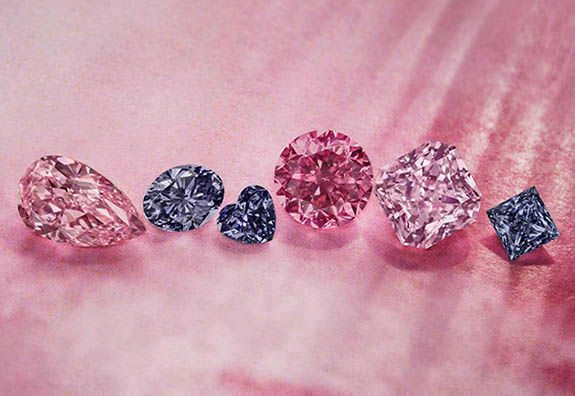The Best Cut and Shape for Diamond Investments
- Rayah Levy, FCD Invest President

- Mar 11, 2022
- 2 min read
Updated: Apr 29, 2025
Cut vs. Shape
When discussing diamonds, we often use cut and shape interchangeably. In actuality, they have completely different meanings.
The cut of a diamond refers to the facets, symmetry, dimensions, and reflective qualities of the diamond. The way a fancy color diamond is cut will impact the brilliance displayed by the natural color of the stone. Included in a GIA Report will be the Diamond’s cut. It is one of the 4C’s of diamond grading. There are five cut grades: Excellent (EX), Very Good (VG), Good (G), Fair (F), and Poor (P).
A beautifully finished (cut) diamond is dazzling. When it interacts with light, each facet and angle affects the amount of light returned to the eye. This is what gives a diamond its face-up appearance and determines how appealing it is.
A diamond with an Excellent cut grade is very bright. It shows an even pattern with good contrast between light and dark areas, so the reflections appear crisp and well-balanced. This tells you that the cutter made the best possible use of the rough diamond. The finer the cut of a diamond, the greater the level of brilliance and fire. The Good cut grade diamond isn’t quite as bright – reflections aren’t as sharp and there’s more darkness or dullness in the diamond. The Poor cut grade diamond has much more prominent dark areas or dullness.
The shape of a diamond is indicative of the outline or external figure of the diamond. For example, pear-shaped, round brilliant, and cushion all refer to the actual shape and appearance of the diamond.
An internationally accepted system for visually evaluating the appearance of fancy-cut diamonds does not exist at this time. The GIA’s research is underway to develop the basic concepts for designing and implementing such a system.
When considering investment diamonds, there are certain shapes and cuts that are worth more than others.
Diamond Cut

Diamond Shape

Most Popular Shapes
#6 Marquise
The Marquise’s elongated figure gives the appearance of a larger stone when compared to other shapes in the same carat. Making the fingers of the wearer look thinner and longer, the Marquise shines brightly and is usually noticed for its unique shape.
#5 Pear
A Pear shaped diamond is harder to find. They are highly requested in pairs (earrings). The Pear shape hides inclusions well.
#4 Radiant Radiants are formed with many facets and angles, making them appear almost like cracked ice. Because of this, flaws and inclusions are easily hidden. The beveled corners of Radiant cuts allow for more stability - making it a wise choice for buyers with an active lifestyle who choose to wear their investment jewelry.
#3 Cushion
Cushions have the luxurious appeal of a classic fashion along with modern fire and flair.
#2 Emerald Most notably, the Emerald cut showcases size better than other diamonds of the same carat.
#1 Round The Round brilliant cut is popular for many reasons. It provides exceptional brilliance and a classic, ageless look. It is the most requested cut and impresses investors universally.
________________________________________________________________________________
Please email FCD Invest at info@fcdinvest.diamonds to discuss your personalized long-term investment strategy. For more information on Fancy Colored Diamonds as an investment, please visit our Fancy Colored Diamond informational page linked here.





Comments